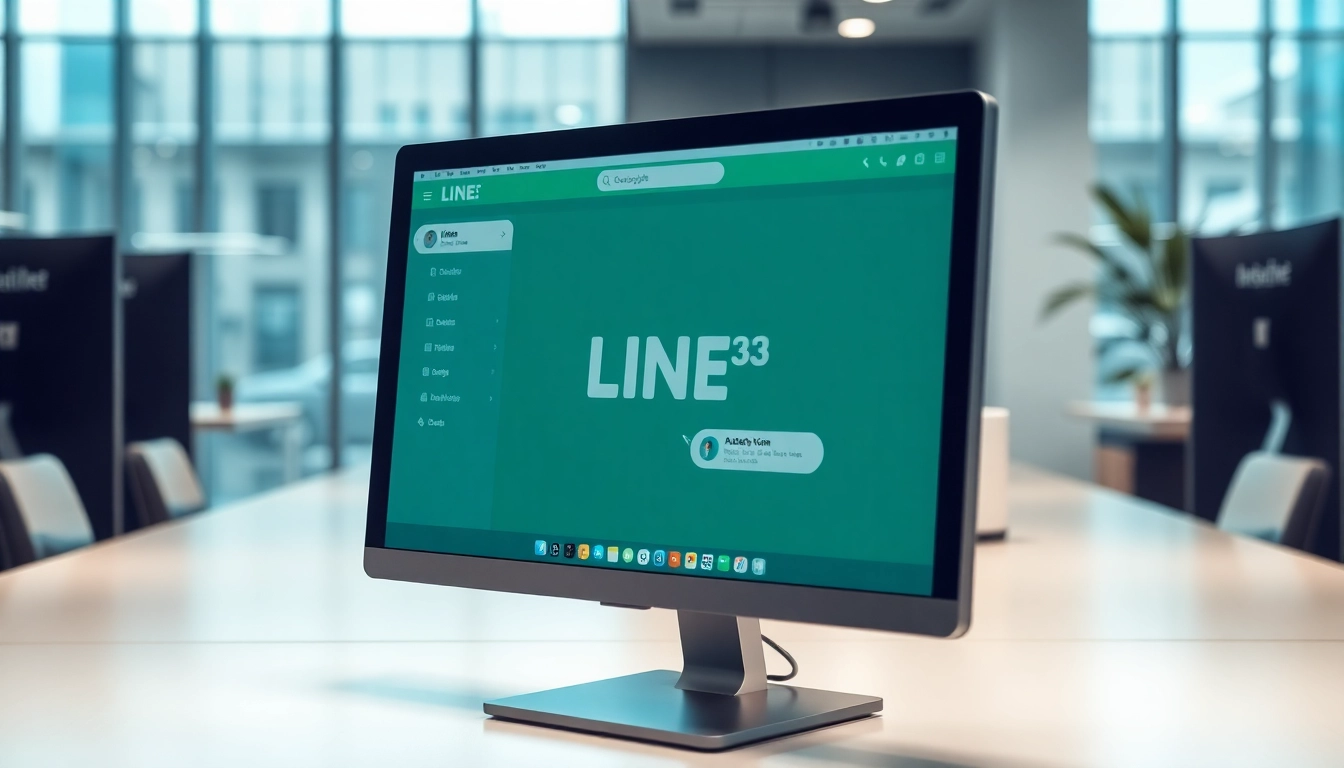Understanding the Fundamentals of Website Design
In today’s digital world, a well-designed website is critical for any brand aspiring to establish a robust online presence. Website design involves a multifaceted approach that requires the integration of various skills and disciplines, making it essential for both functionality and aesthetics. From user interface design to graphic elements, every aspect contributes to a website’s overall effectiveness. By understanding the basics of website design, businesses can create platforms that engage users and drive conversions.
Core Principles of Effective Website Design
Effective website design is built on several foundational principles that drive user engagement and satisfaction. These principles include:
- Clarity: A site’s purpose and message should be easily understood at first glance.
- Consistency: A cohesive visual style enhances user experience and brand recall.
- Accessibility: Web content should be easily navigable for all users, including those with disabilities.
- Responsive Design: Websites must perform well on various devices, ensuring a seamless experience across platforms.
User Experience (UX): The Heart of Website Design
User experience (UX) refers to how a person feels when interacting with a website. Good UX uses elements such as intuitive navigation, efficient loading times, and aesthetically pleasing designs to create positive interactions. Focusing on UX can drastically reduce bounce rates, increase user satisfaction, and boost conversions. For instance, user testing can reveal pain points in navigation, allowing designers to refine the user journey.
The Role of Responsive Design in Modern Websites
Responsive design is no longer optional; it’s a necessity. With an increasing number of users accessing websites via mobile devices, ensuring that a site functions well on smartphones, tablets, and desktops is critical. Responsive design adjusts the layout and elements based on the screen size and device orientation. Not only does this enhance UX, but it also positively impacts SEO, as search engines favor mobile-friendly sites.
Key Components of a Stunning Website Design
Designing a stunning website involves understanding key components that contribute to the overall effectiveness and visual appeal of the site. The following elements are crucial:
Effective Navigation: Guiding Users Seamlessly
Navigation is a pivotal element in website design. A well-structured navigation system helps users find information quickly and efficiently. Some best practices include:
- Simplicity: Keep menu items concise and grouped logically.
- Hierarchy: Use dropdown menus for subcategories to avoid clutter.
- Consistency: Maintain the same navigation structure across all pages.
Visual Elements: Color, Typography, and Imagery
Visual design, including color schemes, typography, and imagery, plays a significant role in creating a stunning website:
- Color: Choose a palette that reflects the brand and elicits the desired emotional response.
- Typography: Select fonts that are easy to read and align with the website’s tone.
- Imagery: Use high-quality images that complement the text and enhance storytelling.
Call-to-Action Buttons: Driving User Engagement
Call-to-action (CTA) buttons are essential for guiding users toward the desired actions, such as filling out a form or making a purchase. Effective CTAs should be:
- Visible: Use contrasting colors and strategic placement to make CTAs stand out.
- Clear: Use action-oriented text that explicitly states what the user can expect.
- Compelling: Create a sense of urgency or value to encourage clicks.
Best Practices for Website Design Success
To achieve long-term success with a website, it’s crucial to implement best practices that enhance usability, optimize for search engines, and encourage regular testing and improvements.
Creating User-Friendly Interfaces
User-friendly interfaces are instrumental in retaining visitors and encouraging interaction. To create a user-friendly interface:
- Conduct User Research: Gather insights about your target audience’s preferences and pain points.
- Utilize Wireframes: Design wireframes to map out the layout before development starts.
- Incorporate Feedback: Regularly solicit and incorporate user feedback to improve functionality.
Integrating SEO in Website Design Strategy
Search engine optimization (SEO) should be an integrated part of website design from the outset. Key aspects include:
- Keyword Research: Identify relevant keywords and incorporate them naturally into the content.
- Meta Tags: Utilize title tags and meta descriptions that succinctly describe the page content.
- Alt Text: Use descriptive alt text for images, enhancing accessibility and helping search engines understand content.
Testing and Optimizing for Performance
Regular testing and optimization are essential for maintaining website performance. Techniques include:
- A/B Testing: Compare variations of webpages to determine which performs better in terms of user engagement.
- Load Testing: Simulate traffic to identify potential bottlenecks and performance issues during high traffic.
- Analytics Monitoring: Use tools to track user behavior, allowing for data-driven decisions.
Common Challenges in Website Design
Creating an effective website design can be fraught with challenges. By anticipating these issues, designers can develop strategies to overcome them.
Balancing Aesthetics with Functionality
One common challenge in website design is the balance between aesthetics and functionality. An overly complex design can confuse users, while an overly simplistic design may fail to convey brand identity. To achieve a balance:
- Prioritize User Needs: Design with the user journey in mind to ensure that visual elements enhance usability.
- Iterate Designs: Create prototypes and adjust based on user testing and feedback.
- Seek Inspiration: Draw design inspiration from successful websites while keeping target audience preferences in focus.
Ensuring Cross-Device Compatibility
With the variety of devices available today, ensuring that a website functions seamlessly across all devices can be challenging. Best practices include:
- Responsive Design Techniques: Use fluid grids and flexible images that adjust based on the device.
- Testing Across Devices: Regularly check how the website performs on various screen sizes and browsers.
- User Feedback: Collect feedback specifically from users interacting on different device types to identify differences in experience.
Addressing Accessibility in Website Design
Accessibility should be a priority in web design. Websites must be usable for people with disabilities, including visual impairments and motor limitations. Steps toward better accessibility include:
- Adhering to Web Content Accessibility Guidelines (WCAG): Ensure your design meets established guidelines for accessibility.
- Implementing ARIA Role Attributes: Use these attributes to improve accessibility for screen readers.
- Testing with Users with Disabilities: Conduct usability tests with individuals who have disabilities to gather specific feedback.
Examples of Exceptional Website Design
Analyzing successful websites can provide valuable insights and inspiration for your own designs.
Analyzing Industry-Leading Websites
Studying industry-leading websites can reveal what makes them successful. Consider factors such as:
- Design Aesthetics: Evaluate color schemes, typography, and overall visual appeal.
- User Journey: Analyze how easy it is for users to navigate and complete desired actions.
- Content Quality: Assess how effectively the content communicates and engages the audience.
Learning from Design Awards and Case Studies
Design awards and case studies often highlight cutting-edge design practices and trends. By reviewing these examples, you can identify:
- Innovative Approaches: Discover new design methodologies that push boundaries.
- Success Metrics: Look at case studies detailing the impact of design changes on user engagement and conversion rates.
Future Trends in Website Design to Watch
The world of website design is constantly evolving. Keeping an eye on emerging trends can help you stay relevant:
- Dark Mode: Many users prefer dark themes for reduced eye strain and aesthetic reasons.
- Micro-Interactions: Small animations help engage users without overwhelming them.
- AI-Driven Design: AI tools are capable of creating personalized experiences and enhancing user engagement.



